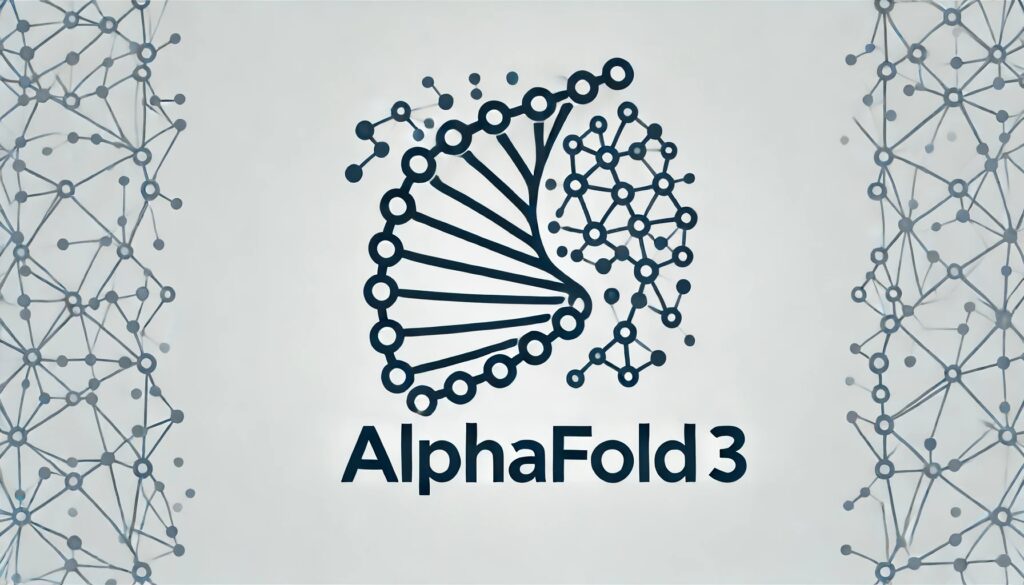
The Dawn of a New Era in Science
The world of protein structure prediction has witnessed a groundbreaking leap with the advent of AlphaFold 3. Building on the remarkable achievements of its predecessors, AlphaFold 3 promises to revolutionize our understanding of biological processes. This revolutionary tool could transform fields from medicine to environmental science.
From AlphaFold to AlphaFold 3: An Evolutionary Leap
AlphaFold’s journey began with DeepMind’s ambitious goal to predict protein structures with unprecedented accuracy. AlphaFold 1 made significant strides, and AlphaFold 2 astonished the scientific community with its near-experimental precision. Now, AlphaFold 3 is here, pushing the boundaries even further, setting new standards in the field of computational biology.
Unmatched Accuracy and Speed
One of the most exciting advancements in AlphaFold 3 is its enhanced accuracy. It can predict complex protein structures more precisely than ever before. Moreover, it does so at an impressive speed, allowing researchers to conduct studies that were previously unimaginable. This efficiency is crucial for tackling urgent health crises and advancing drug discovery.
Broadening the Scope of Research
AlphaFold 3 is not just about accuracy and speed; it’s also about expanding the horizons of research. It can predict structures of previously challenging proteins, including those with intricate folding patterns. This capability opens new avenues for studying diseases and developing targeted therapies.
Real-World Applications: Transforming Medicine
The implications of AlphaFold 3 in medicine are profound. By understanding protein structures better, scientists can design more effective drugs with fewer side effects. This innovation is particularly significant in the fight against diseases like cancer, Alzheimer’s, and COVID-19.
Accelerating Drug Discovery
Traditional drug discovery processes are time-consuming and costly. With AlphaFold 3, the process can be significantly accelerated. Researchers can identify potential drug targets quickly and design molecules that interact with these targets more efficiently. This acceleration could lead to faster development of life-saving medications.
Personalized Medicine: A New Frontier
Another exciting application is in the realm of personalized medicine. By analyzing the protein structures unique to an individual’s genetic makeup, AlphaFold 3 can aid in creating tailored treatments. This approach could revolutionize how we treat various conditions, offering more precise and effective healthcare solutions.
Environmental Science: Protecting Our Planet
Beyond medicine, AlphaFold 3 holds promise for environmental science. It can help understand the proteins involved in environmental processes, such as those that contribute to pollution breakdown and climate change mitigation. This knowledge is essential for developing strategies to protect our planet.
Studying Enzymes and Biodegradation
Enzymes play a crucial role in breaking down pollutants. AlphaFold 3 can predict the structures of these enzymes, enabling scientists to engineer more effective versions for environmental cleanup. This innovation could lead to significant advances in reducing pollution and restoring ecosystems.
Addressing Climate Change
Climate change is one of the most pressing challenges of our time. AlphaFold 3 can assist in understanding proteins involved in carbon capture and storage processes. By enhancing these natural mechanisms, we can develop more efficient ways to reduce greenhouse gas emissions.
Collaborative Efforts: A Global Impact
The success of AlphaFold 3 is a testament to the power of collaboration. DeepMind has made this tool accessible to the global scientific community, fostering a spirit of cooperation. Researchers worldwide can leverage AlphaFold 3 to accelerate their work and drive innovation across disciplines.
Open Access and Shared Knowledge
DeepMind’s commitment to open access ensures that AlphaFold 3’s benefits are widely distributed. By sharing this technology, they enable scientists from diverse fields to collaborate and share insights. This collective effort is crucial for tackling complex global challenges.
The Future of Protein Research
As we look to the future, the impact of AlphaFold 3 is poised to grow. Its continuous development and integration into research practices will likely lead to even more groundbreaking discoveries. The possibilities are endless, and the journey has just begun.
Anticipating New Discoveries
With AlphaFold 3, we can anticipate a wave of new discoveries that will reshape our understanding of biology. From uncovering the mysteries of life at the molecular level to developing innovative solutions for global health and environmental challenges, the future looks incredibly promising.
Conclusion
AlphaFold 3 marks a significant milestone in protein structure prediction. Its unparalleled accuracy, speed, and broad applicability are set to revolutionize fields ranging from medicine to environmental science. As we embrace this new era of discovery, the potential for innovation and positive impact is boundless.
FAQ’s
How does AlphaFold 3 differ from previous versions?
AlphaFold 3 builds on the success of AlphaFold 2 by extending its capabilities to include not just proteins but also DNA, RNA, and small molecules. It significantly improves prediction accuracy and can model complex molecular interactions with unprecedented precision. The model uses an enhanced version of the Evoformer module and a diffusion network to generate accurate molecular structures.
How accurate is AlphaFold 3?
AlphaFold 3 offers at least a 50% improvement in predicting molecular interactions compared to previous methods. For some important categories, the accuracy has doubled. It is particularly effective in predicting how proteins interact with other biomolecules, making it a powerful tool for drug discovery and other scientific research.
Is AlphaFold 3 accessible for researchers?
Yes, AlphaFold 3’s capabilities are available to scientists for non-commercial academic research through the AlphaFold Server. This platform allows researchers to generate molecular complex predictions easily and accurately, regardless of their access to computational resources or expertise in machine learning.
How is AlphaFold 3 used in drug discovery?
AlphaFold 3 is used to predict how drugs (small molecules or ligands) interact with target proteins. This helps in designing effective drug compounds by providing detailed insights into the binding sites and interaction strengths. It is already being used in collaborations with pharmaceutical companies to develop new treatments and accelerate drug design processes.
What are some key features of AlphaFold 3?
- Broad Molecular Scope: Includes proteins, DNA, RNA, and ligands.
- High Accuracy: Improved prediction accuracy for molecular interactions.
- Free Accessibility: Available through the AlphaFold Server for academic research.
- Advanced Technology: Utilizes enhanced Evoformer module and diffusion network.
- Drug Discovery Applications: Facilitates the design of effective drug compounds.
How does AlphaFold 3 handle protein-protein interactions?
AlphaFold 3 excels in predicting protein-protein interactions by modeling how proteins interact with each other and other biomolecules. It uses a multi-track attention-based architecture to predict 3D structures and provides a residue-level confidence measure known as pLDDT (predicted Local Distance Difference Test) to estimate the accuracy of these predictions. This makes it highly effective in modeling complex protein assemblies and their functional interactions.
What are the applications of AlphaFold 3 in scientific research?
AlphaFold 3 is used in various scientific research areas, including:
- Drug Discovery: Identifying how potential drugs interact with target proteins, facilitating the design of new therapeutics.
- Genomics: Understanding the structural basis of gene regulation and expression.
- Biochemistry: Exploring the structure-function relationships of enzymes and other proteins.
- Molecular Biology: Studying the interactions between proteins, nucleic acids, and other biomolecules to elucidate cellular processes .

How was AlphaFold 3 trained?
AlphaFold 3 was trained on extensive molecular structural data from the Protein Data Bank (PDB). This database contains experimentally characterized structures of proteins and other biomolecules. The model leverages this data to learn the complex relationships between amino acid sequences and their corresponding 3D structures, allowing it to generalize and predict structures for novel sequences accurately.
What improvements does the Evoformer module bring to AlphaFold 3?
The Evoformer module, a critical component of AlphaFold 3, enhances its predictive capabilities by incorporating a multi-track attention mechanism that processes multiple sequence alignments and structural information. This module improves the model’s ability to handle complex molecular interactions and predict accurate structures even in challenging cases.
Can AlphaFold 3 predict the effects of mutations on protein structure?
Yes, AlphaFold 3 can predict how mutations might affect the structure of proteins. By comparing the predicted structure of a mutated protein to the wild-type structure, researchers can infer the potential impact of mutations on protein stability, function, and interactions. This is particularly useful in studying diseases caused by genetic mutations and in designing mutation-resistant therapeutic proteins.
How does AlphaFold 3 contribute to personalized medicine?
AlphaFold 3 contributes to personalized medicine by providing detailed structural insights into individual proteins and their interactions. This enables the development of personalized treatments tailored to the specific molecular characteristics of a patient’s disease. For example, it can help design drugs that target unique protein mutations found in individual patients, improving treatment efficacy and reducing side effects.
What are some examples of real-world applications of AlphaFold 3?
Real-world applications of AlphaFold 3 include:
- Developing new cancer treatments: By predicting how proteins involved in cancer pathways interact, researchers can design targeted therapies.
- Creating vaccines: Understanding the structure of viral proteins helps in designing effective vaccines.
- Engineering enzymes: Designing enzymes with specific properties for industrial applications, such as breaking down plastics or biofuel production.
How can researchers access AlphaFold 3?
Researchers can access AlphaFold 3 through the AlphaFold Server, which provides a user-friendly platform for generating molecular complex predictions. This server is available for non-commercial academic research, allowing scientists to leverage AlphaFold 3’s capabilities without requiring extensive computational resources.
For more detailed information, you can explore the official pages of Google DeepMind, Isomorphic Labs, and relevant scientific publications: